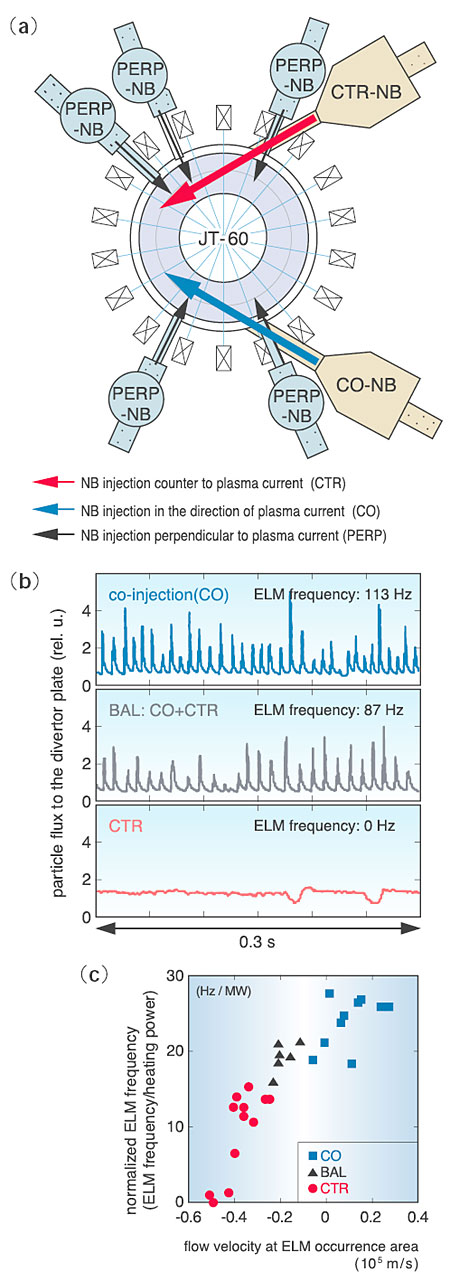|
For ITER and future fusion reactors, it is necessary to maintain high confinement plasmas while controlling the accumulation of impurities and helium ash produced by the fusion reaction. High-confinement mode (H-mode) operation is intended as a standard scenario for ITER. The conventional stationary H-mode scenario is characterized by the presence of edge localized modes (ELMs). Such H-mode plasmas with ELM possess high levels of thermal confinement while maintaining density and impurity control through the ELMs. However, large ELMs release high levels of heat and particle fluxes into the scrape-off layer, and this would cause rapid erosion of the divertor target plates in the next step devices, such as ITER. It is therefore important to control the pulsed heat and particle loads due to ELMs, and their frequencies. JT-60U has several neutral beam (NB) injection directions, as shown in Fig. 2-9 (a). Various combinations of these NBs make it possible to control the plasma flow. The impact of plasma flow velocity on ELM behavior has been investigated in JT-60U H-mode plasmas under similar absorbed NB heating power adjusted by injecting perpendiculer beams (PERP-NB). A comparison of the particle flux to the divertor plate among the co-, balanced-, and counter- injection cases (CO, BAL, and CTR) is shown in Fig. 2-9 (b). This comparison reveals that the ELM behavior is significantly different for each NB injection direction. The ELM frequency in the case of BAL is smaller than that for the CO case, and the magnitude of spikes in the particle flux induced by the ELMs decreases. For CTR injection, the ELMs disappeared. The relation between the ELM frequency normalized by the heating power and the flow velocity at the ELM occurrence area were then investigated, as shown in Fig. 2-9 (c). The ELM frequency decreases significantly with increased plasma flow velocity in the counter direction. It seems that there is a critical value of plasma flow velocity required for the disappearance of ELMs. The above results provide the first indication that the ELM frequency and pulsed ELM heat load onto the divertor plates can be actively controlled through the plasma flow velocity. By applying these results, it may be possible to control particle and heat fluxes to the divertor plate in ITER and in future fusion reactors.
|
